‘Walk On’s Kendra Johnson has a knack for defying the odds
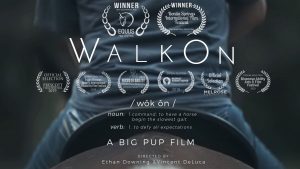 Best Short Documentary honors at this year’s Bonita Springs International Film Festival went to Walk On, a 10 minute film that tells the story of Kendra Johnson who has learned to overcome disabilities attributable to a genetic disorder known as arthrogryposis through her interactions with the staff and horses at the Naples Therapeutic Riding
Best Short Documentary honors at this year’s Bonita Springs International Film Festival went to Walk On, a 10 minute film that tells the story of Kendra Johnson who has learned to overcome disabilities attributable to a genetic disorder known as arthrogryposis through her interactions with the staff and horses at the Naples Therapeutic Riding 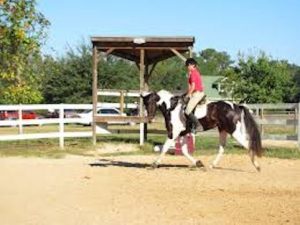 Center.
Center.
Arthrogryposis multiplex congenita or AMC is characterized by joint contracture in two or more areas of the body. It derives its name from two Greek words which translate as “curved or hooked joints” and refers to a condition in which a joint becomes permanently fixed in a bent (flexed) or straightened (extended) position, completely or partially restricting the 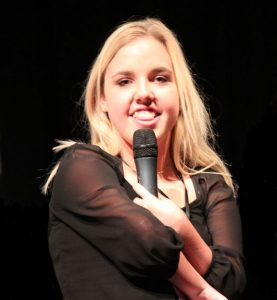 joint’s movement. In addition, the muscles of the affected limbs are typically underdeveloped.
joint’s movement. In addition, the muscles of the affected limbs are typically underdeveloped.
Kendra’s AMC affected her right elbow, hips and legs. Her contractures were severe. So severe, in fact, that her doctors told her parents, Ken and Tonya Johnson, that that Kendra might not live. Even if she beat the odds, they felt certain she’d never walk.
But Kendra survived.
And she endured two surgeries to fix her feet before she was nine 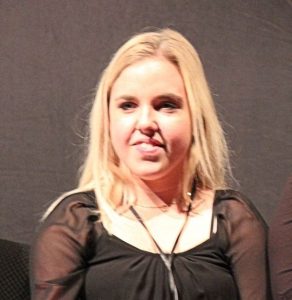 months old.
months old.
Operations on her hips followed. But her right elbow was frozen in a bent position. She would never be able to straighten that arm.
Through it all, Kendra’s mom was determined that her daughter would have a normal life. Or least as normal a life as someone with AMC could enjoy. If nothing else, her daughter would learn to be self-sufficient.
Toward that end, Tonya resorted to imaginative exercises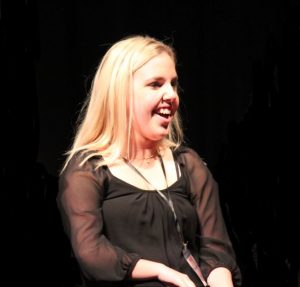 to teach Kendra life skills that come naturally to other children. For example, to teach Kendra to feed herself, Tonya placed her daughter in a high chair with a plate of macaroni beckoning from the plastic tray. While Kendra sat there bewildered, Tonya and Kendra’s sister, Rebecca, began singing. Distracted by her family’s musicality, Kendra finally figured out what she needed to do. When her mom and sister came around the corner to see how Kendra was doing, they found her blissfully covered in macaroni, sated and ready
to teach Kendra life skills that come naturally to other children. For example, to teach Kendra to feed herself, Tonya placed her daughter in a high chair with a plate of macaroni beckoning from the plastic tray. While Kendra sat there bewildered, Tonya and Kendra’s sister, Rebecca, began singing. Distracted by her family’s musicality, Kendra finally figured out what she needed to do. When her mom and sister came around the corner to see how Kendra was doing, they found her blissfully covered in macaroni, sated and ready 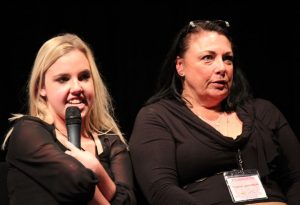 to join with them in the family song.
to join with them in the family song.
This seemingly small feat was a huge triumph.
Kendra was now working things out for herself.
“I expected the same things from Kendra that I did from Rebecca,” says Tonya. Her tack worked. In fact, for the longest time, Kendra had no idea she was 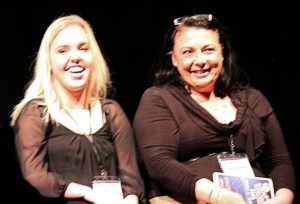 different from other kids.
different from other kids.
“It wasn’t until she went to school for the first time that she realized she wasn’t like other children her age.”
“I remember coming home and asking why the other kids walked so differently,” Kendra adds. “I thought there was something wrong with them.”
But the challenge 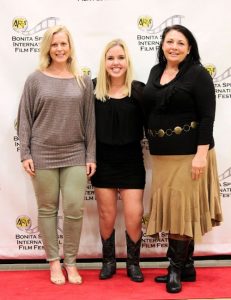 wasn’t just to provide Kendra with a semblance of normalcy. The overarching goal was to give her the skills needed to be self-sufficient, to live independently one day.
wasn’t just to provide Kendra with a semblance of normalcy. The overarching goal was to give her the skills needed to be self-sufficient, to live independently one day.
Unfortunately, none of the doctors, occupational therapists or other professionals that the family contacted knew where to begin to help Kendra gain the mobility she would need to gain that self-sufficiency Tonya so dearly wanted for her daughter.
“I didn’t want to be sad in front of my daughter because then she’d be sad too,” Tonya says of those early struggles. “I took a lot of showers where I’d cry and cry and cry.”
Then she and Ken discovered the Naples Therapeutic Riding Center.
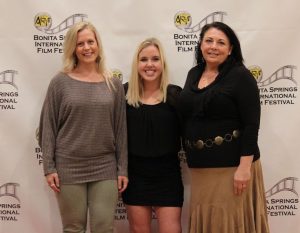 The Naples Therapeutic Riding Center seeks to improve the lives of children and adults with physical, social and mental health needs through therapeutic riding and other equine-related programs. From modest beginnings, NTRC has evolved into one of the top equine-assisted therapy centers in the entire Southeast. NTRC now serves more than 700 participants each year and provides more than 9,000 hours of service annually. With a herd of 12 to
The Naples Therapeutic Riding Center seeks to improve the lives of children and adults with physical, social and mental health needs through therapeutic riding and other equine-related programs. From modest beginnings, NTRC has evolved into one of the top equine-assisted therapy centers in the entire Southeast. NTRC now serves more than 700 participants each year and provides more than 9,000 hours of service annually. With a herd of 12 to 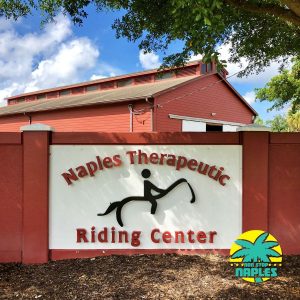 14 horses and the assistance of 350 community volunteers, NTRC is one of the few organizations capable of providing unique equine-assisted therapies to a broad range of children and adults who show increasing benefits due to their interactions with horses, including people suffering from PTSD.
14 horses and the assistance of 350 community volunteers, NTRC is one of the few organizations capable of providing unique equine-assisted therapies to a broad range of children and adults who show increasing benefits due to their interactions with horses, including people suffering from PTSD.
Kendra was just 3 when she was hoisted onto the back of her first horse. She doesn’t remember her first ride, of course, but her mother clearly recalls the joy and sheer terror she experienced as one volunteer led the 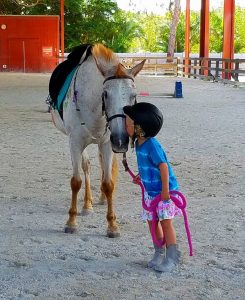 horse on a lead-line while two others walked on either side of the unsteady toddler.
horse on a lead-line while two others walked on either side of the unsteady toddler.
“The gait of a horse matches the gait of a human,” Kendra points out. “Just sitting on the horse led me to walk.”
Horses have different styles of movement. When a person riding a horse experiences this movement, they receive physical, sensory, and neurological stimulation to the same degree as if they’d walked a long distance.
Riders with disabilities receive a multitude of other benefits that they could not receive through mere walking alone.
The NTRC website 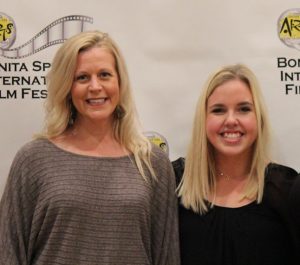 points out that among these other benefits are “improved posture and balance, stronger muscles, cognitive improvements, improved hand-eye coordination, improved fine and gross motor control, enhanced communication skills, increased self-confidence and self-esteem and new problem solving skills.”
points out that among these other benefits are “improved posture and balance, stronger muscles, cognitive improvements, improved hand-eye coordination, improved fine and gross motor control, enhanced communication skills, increased self-confidence and self-esteem and new problem solving skills.”
The verbal skills, self-confidence and enhanced self-esteem come from being surrounded by a host of adults who are dedicated to their improvement and support. 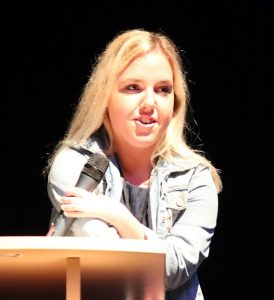 But many riders experience a freedom of motion and ability they simply do not or cannot enjoy in other aspects of their lives.
But many riders experience a freedom of motion and ability they simply do not or cannot enjoy in other aspects of their lives.
But how?
“You’re constantly in the moment,” Kendra supplies. “You’re doing things without thinking about [the mechanics], and when you’re done, you pause and realize, ‘Oh, I just did that!’”
For example, in order to grab a bean bag from the top of a 55-gallon barrel, she had to work the muscles in her back, shoulders and arms. 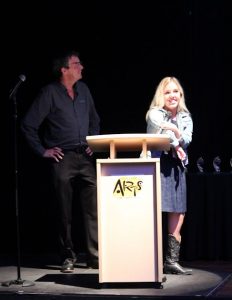 And to get her horse to trot, she had to squeeze her legs tight and press her heels into his flanks.
And to get her horse to trot, she had to squeeze her legs tight and press her heels into his flanks.
“When I’m on a horse, all of the problems in my life just go away. Everything that I can’t do, it all just goes away right then and there. I’m in the moment with my horse. It’s not until I get off the horse and feel a little sore – that good hurt – that I realize that I just worked those muscles.”
Like that kid in the high chair, it’s the power of distraction.
But for someone with arthrogryposis, there’s more involved than simply toning muscles. There’s also the matter of contractures. The 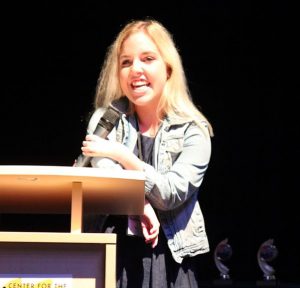 riding instructors at NTRC are professionals. Over time, they came to know Kendra so well that they were able to target the contractures and her concomitant low muscle tone.
riding instructors at NTRC are professionals. Over time, they came to know Kendra so well that they were able to target the contractures and her concomitant low muscle tone.
And the horses did their part as well.
“Our horses are not like normal horses,” Kendra remarks, taking ownership of NTRC and all of its component parts. “I remember when I was in middle school, I was putting a bridle on Ace and having a hard time because it’s hard for me to lift my arms above my head.”
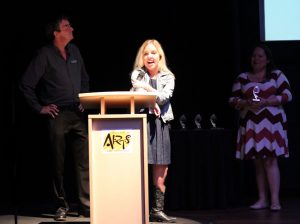 Not only his her right elbow frozen in place, Kendra is short.
Not only his her right elbow frozen in place, Kendra is short.
“Right? Well Ace figured out that I was having trouble and lowered her head for me.”
The Center’s horses are somewhat intuitive. While they go off leg cues, they also respond to verbal commands.
“They fit to the person. 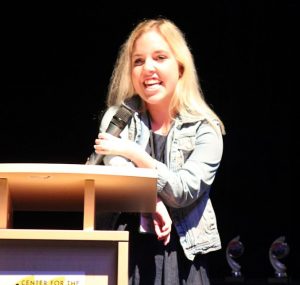 You choose them, but they choose you back.”
You choose them, but they choose you back.”
While Kendra has found a place where she could flourish, that’s not to say that Kendra’s progress was easy or straight-line. It was neither.
“But I’m the kind who gets mad rather than cries,” Kendra muses, steely resolve flashing from her sparkling eyes. “I’m going to keep at it. I’m going to get closer next time. When I can’t do something, it pushes me more to do it. I may do it slower, but 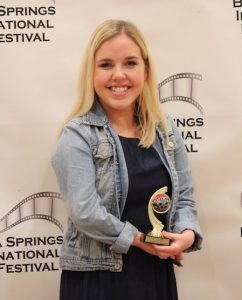 I’m going to do it.”
I’m going to do it.”
And do it she has!
Kendra hasn’t required a lead-line or spotters since middle school. While she still needs help to mount and dismount, her trotting days are behind her too. She’s now able to cantor her horse and do most of the things that other equestrians take for granted.
Which is precisely why NTRC Executive Director Melissa S. Lamont thought about featuring her in a short documentary as the Center’s annual Bootstrap Boogie Barn Dance Fundraiser approached 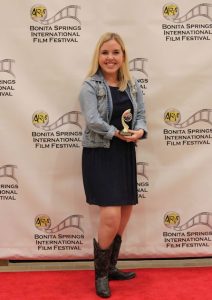 in 2018.
in 2018.
Kendra was all in.
“I love this program,” Kendra says expansively. “It’s part of my life. I know I wouldn’t be the same without this program. So I’m willing to help in any way to showcase this program. Plus, I’m very open. I’m okay with people watching me. And by being receptive, people relax and aren’t afraid to ask questions.”
While Tonya and Ken were honored and thrilled to be part of the project, Tonya had one major concern.
“My daughter is a success story, not a pity party. This was for a fundraiser and I wanted 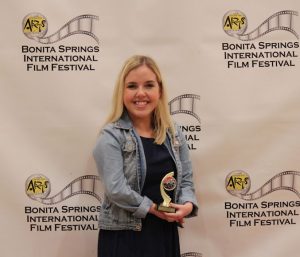 [NTRC’s donors and other benefactors] to see that all the money they’d put into this organization, in my eyes, produced this amazing, beautiful young lady who’s getting ready right now to go off to college and live on her own.”
[NTRC’s donors and other benefactors] to see that all the money they’d put into this organization, in my eyes, produced this amazing, beautiful young lady who’s getting ready right now to go off to college and live on her own.”
Lamont had reached out to Vincent DeLuca and Ethan Downing of Big Pup Film. They’d done a documentary for an earlier NTRC fundraiser, and the results had been terrific.
“We trusted 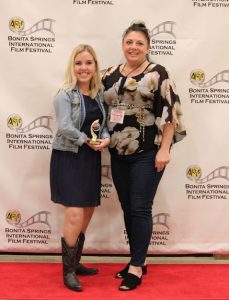 them implicitly,” Lamont nods.
them implicitly,” Lamont nods.
The filmmakers did not stage a single shot. And to ensure authenticity, they tactfully declined to provide Lamont, Kendra or her mom and dad with the questions they planned to ask during the filming. Instead, they encouraged Kendra to just go about her normal routine as if they weren’t there.
“I didn’t really know what to expect,” Kendra confesses. “I’ve done interviews before that they videotaped, but it was just my face. Here, [the film crew] followed me around. But Ethan and Vinny made me feel so comfortable, I never felt like I was being interrogated.”
They’d bring 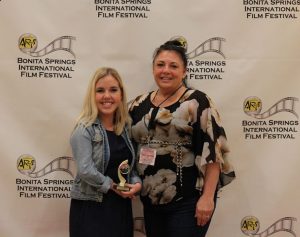 Kendra chocolate milk each morning and made her feel like I was a movie star.
Kendra chocolate milk each morning and made her feel like I was a movie star.
“I felt like I was just talking to a friend.”
“We wouldn’t let them see [the film] beforehand,” Lamont divulges. “I’d seen it, of course, because there were several edits. But we didn’t [the Johnsons] see it until the night of the fundraiser.”
The documentary brought Tonya to tears.
“When we saw the 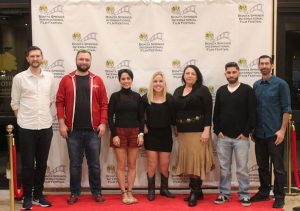 film for the first time that night I thought, wow, this girl is amazing. It was empowering. They brought me to the level of my heart breaking for her struggles, but yet look at her now.”
film for the first time that night I thought, wow, this girl is amazing. It was empowering. They brought me to the level of my heart breaking for her struggles, but yet look at her now.”
Kendra was also pleased.
“I was in awe. I couldn’t believe it was me! And to see my mom in the film ….”
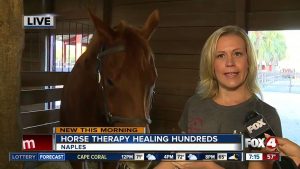 Dad prefers to stay out of the limelight.
Dad prefers to stay out of the limelight.
“I loved the way they showed me and my family.”
But what Kendra admired most was the message so clearly conveyed by Walk On.
“To me, God doesn’t make mistakes. Don’t ever let anyone tell 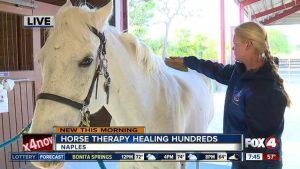 you you can’t do something. If you’re a kid with a disability, you can do everything you want.”
you you can’t do something. If you’re a kid with a disability, you can do everything you want.”
So what is it that Kendra wants?
She’s planning to leave in the Fall for college, where she’ll live on her own just like any other incoming freshman. She plans 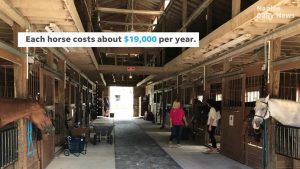 to major in accounting and minor in agriculture, and then go on to law school so that she can achieve her ultimate, life goal.
to major in accounting and minor in agriculture, and then go on to law school so that she can achieve her ultimate, life goal.
“I want to create a foundation or non-profit that operates a retirement home for therapy horses like the ones here at NTRC,” 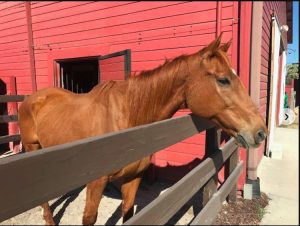 she declares.
she declares.
The horses at NTRC aren’t just special to her and her parents. They’re special period. Most are older – 10 and up. Most are neutered males, known as geldings. All possess that unique personality or temperament that enables them to connect with riders with special needs. They like working with humans.
“Not every 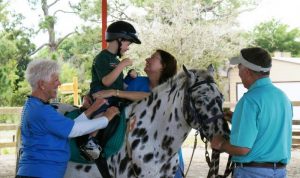 horse is suited to this job,” Lamont observes. “Most horses wouldn’t like having walkers on either side of them or having an unbalanced rider on their back.”
horse is suited to this job,” Lamont observes. “Most horses wouldn’t like having walkers on either side of them or having an unbalanced rider on their back.”
It’s an instinctual thing. Being herd animals, most horses have a strong flight instinct. And because of the location of their eyes, 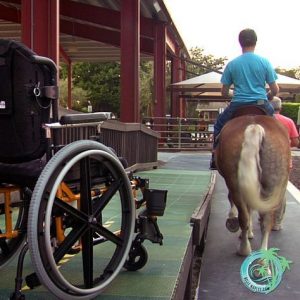 they have limited peripheral vision. As a consequence, activities happening south of their withers (around the base of their long necks) tend to spook them. It takes an older, more seasoned horse to remain calm.
they have limited peripheral vision. As a consequence, activities happening south of their withers (around the base of their long necks) tend to spook them. It takes an older, more seasoned horse to remain calm.
“And it’s not the same rider every time,” Lamont adds. “There are lots of different riders. So we have to find horses with the right temperament for the work, the right compassion for the special cargo that’s on their back. So an older horse who’s had a couple of other jobs and maybe wants a slower pace 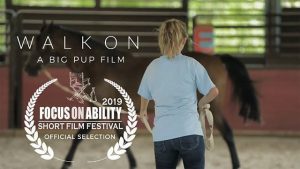 would like this. They get a lot of love, a lot of people who care about them.”
would like this. They get a lot of love, a lot of people who care about them.”
Kendra is part of that esteemed group.
“These horses dedicate their lives to children like me, so I want them to have a nice place they can retire to, where they can graze and be happy the rest 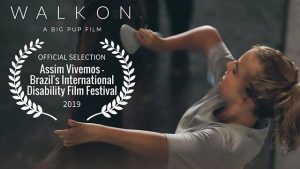 of their days.”
of their days.”
Lest you think otherwise, keep in mind that Kendra Johnson has a knack for defying the odds. No matter how hard her chosen path may prove, she’ll find a way to work things out.
“I’m going to keep at it,” she’s been known to profess. “I may do it slower, 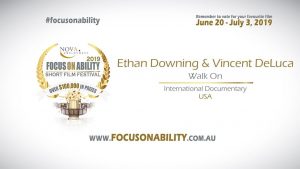 but I’m going to do it.”
but I’m going to do it.”
And she’ll have a lot of support.
In addition to Best Short Documentary at this year’s Bonita Springs International Film Festival, Walk On took Best Equestrian Documentary Mini honors at EQUUS Film Festival and was an Official Selection of the Prescott Film Festival, Focus On Ability Film Festival, Assim Vivemos (Brazil’s International Disability Film Festival), Melrose Film Festival, Respect Belfast Human Rights Film Festival and the Bluenose Ability Arts & Film Festival.
If you’ve got 10 minutes, you can go here to watch the film.
March 21, 2020.














 Tom Hall is both an amateur artist and aspiring novelist who writes art quest thrillers. He is in the final stages of completing his debut novel titled "Art Detective," a story that fictionalizes the discovery of the fabled billion-dollar Impressionist collection of Parisian art dealer Josse Bernheim-Jeune, thought by many to have perished during World War II when the collection's hiding place, Castle de Rastignac in southern France, was destroyed by the Wehrmacht in reprisal for attacks made by members of the Resistance operating in the area. A former tax attorney, Tom holds a bachelor's degree as well as both a juris doctorate and masters of laws in taxation from the University of Florida. Tom lives in Estero, Florida with his fiancee, Connie, and their four cats.
Tom Hall is both an amateur artist and aspiring novelist who writes art quest thrillers. He is in the final stages of completing his debut novel titled "Art Detective," a story that fictionalizes the discovery of the fabled billion-dollar Impressionist collection of Parisian art dealer Josse Bernheim-Jeune, thought by many to have perished during World War II when the collection's hiding place, Castle de Rastignac in southern France, was destroyed by the Wehrmacht in reprisal for attacks made by members of the Resistance operating in the area. A former tax attorney, Tom holds a bachelor's degree as well as both a juris doctorate and masters of laws in taxation from the University of Florida. Tom lives in Estero, Florida with his fiancee, Connie, and their four cats.